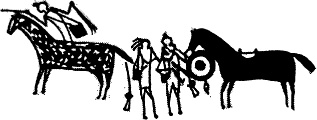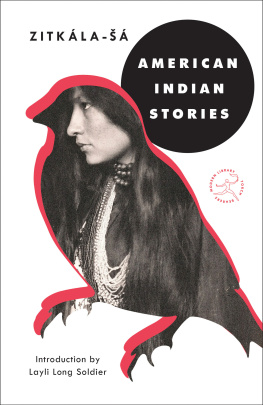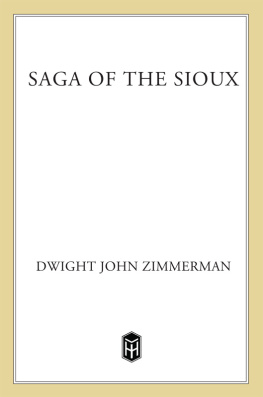The Last Days of the Sioux Nation
THE LAST DAYS OF THE SIOUX NATION
Second Edition

Robert M. Utley

Copyright 1963 by Yale University
New material for Second Edition Copyright 2004 by
Yale University
Originally published as Yale Western Americana Series, 3
All rights reserved.
This book may not be reproduced, in whole or in part, including illustrations, in any form (beyond that copying permitted by Sections 107 and 108 of the U.S. Copyright Law and except by reviewers for the public press), without written permission from the publishers.
Printed in the United States of America.
Library of Congress Control Number: 2003116919
ISBN 0-300-10316-6 (pbk.: alk. paper)
A catalogue record for this book is available from the British Library.
The paper in this book meets the guidelines for permanence and durability of the Committee on Production Guidelines for Book Longevity of the Council on Library Resources.
10 9 8 7 6 5 4 3 2 1
The Red man was the true American. They have almost all gone, but will never be forgotten. The history of how they faught for their country is written in blood, a stain that time cannot grinde out. Their God was the sun their church all out doors. Their only book was nature and they knew all the pages.
Charles M. Russell
Contents
List of Illustrations
Following page 166
Maps, by Walter T. Vitous page
Preface to the Second Edition
I BEGIN BY CONFESSING that I think The Last Days of the Sioux Nation is the wrong title for this book. Not only does nation misconstrue nineteenth-century Sioux political organization, but the Ghost Dance and Wounded Knee did not represent the final days of the Sioux tribes. They went on doing what they had been doing for generationsadapting. They still live, vibrant, proud, defined by selfidentityand adapting. Yet Wounded Knee cannot be discounted as a significant turning point in the process of adaptation. It ended one era and opened another in the lives of the Sioux people. Still, if I were revising this book today, I would seek a more accurate title.
Other confessions are in order. This was to have been my doctoral dissertation at Indiana University when I got out of the army. I did most of the research while assigned to the Historical Section of the Joint Chiefs of Staff in the Pentagon, in 195457. Owing to the responsibilities of a new family and the lure of writing history for the government, I did not return to Indiana but ended up embarking on a career in the National Park Service. I drafted the text of this book while assigned to the services Southwest Regional Office in Santa Fe, New Mexico, in 195861. At the founding meeting of the Western History Association in Santa Fe in October 1961, David Horne of Yale University Press thrilled me by expressing interest in the book for Yales new Western Americana Series. That is where it appeared, as the third book in the series, in 1963.
The point of this autobiographical digression is to stress that I wrote the book at least a decade before Indian studies became fashionable. Such anthropologists as Clark Wissler and Robert Lowie provided valuable perspectives from the early twentieth century, but a host of insightful ethnohistorians did not begin to probe deeply into fundamental cultural issues until the 1970s. Calvin Martin, Raymond DeMallie, Colin Calloway, Francis Jennings, Wilbur Jacobs, Wilcomb Washburn, Frederick Hoxie, and Robert Berkhofer come to mind. In a later work, The Indian Frontier of the American West (University of New Mexico Press, 1984; revised edition 2003), I emphasized Calvin Martins thesis that Indian-white relations were best understood in terms of two radically different thoughtworlds condemned never to understand each other, forever to talk past each other.
Readers of this new edition of The Last Days of the Sioux Nation should bear in mind that in the late 1950s I did not have these perspectives to draw on. I tried hard to get inside the Indian thought-world, but some of my judgments betray my white thought world.
On the most elementary level, I would clean up some of the wording. I would degenderize the text. I have long since ceased to characterize any Indians as hostiles or as tame or wild. I would no longer call the Ghost Dance a craze. Frenzy, fanatical, and orgy of dancing would also be deleted. I would not label the old spiritual beliefs pagan. I might not even apply the word religion to any aspect of the spiritual world of the Sioux, for it would carry connotations of the mold into which the Christian missionaries were attempting to force that spiritual world. Although I did not call Indian women squaws, I would not now refer to mix-bloods as squaw men or half-breeds.
In 1982 anthropologist Raymond DeMallie wrote a reasoned analysis of the Ghost Dance in which he criticized the consensus interpretation, of which he selected mine as the most prominent example. (The Lakota Ghost Dance: An Ethnohistorical Account, Pacific Historical Review 51 [October 1982]: 385405). A major emphasis was that the Ghost Dance was not an isolated phenomenon to be treated as separate from the traditional Lakota beliefs and practices. Rather, it was a stage in spiritual concepts that had been changing for generations, concepts that by the 1880s had also been influenced by Christianity.
Thus DeMallie takes issue with me for writing that after Wounded Knee, the reality of the conquest descended upon the entire Nation with such overwhelming force that it shattered all illusions. It did not, he avers. The Ghost Dance was merely part of the religious history of the Lakota people, and its collapse led to new beliefs, new philosophies, and ultimately a major intellectual reworking of the epistemological foundations of Lakota culture. In other words, the Sioux adapted, as they had been doing for generations. DeMallie is right.
I am also faulted for crediting the Sioux with understanding that the reservation meant the end of the old life. That the vanishing herds symbolized their own vanishing ways of life cannot have escaped the Sioux, I wrote. Nonsense, he says in more friendly wording that presents it as a manifestation of western philosophy. Right again. The Utley thoughtworld attributed beliefs to an Indian thoughtworld to which they would have been alien and incomprehensible.
Finally, DeMallie rejects the consensus that the catastrophes that befell the Sioux during the 1880s caused them to pervert a doctrine of pacifism into one of militance. He is correct that the Sioux were essentially nonviolent until the army invaded the reservations and precipitated armed defense against government interference in the dancing. Although nonviolent, however, the dance displayed enough trappings of militance to alarm nearby settlers. The Ghost Shirt, with its promise to deflect the bullets of the white soldiers, and the rhetoric of armed resistance to suppression of the dancing, pushed the agencies with new and incompetent agents to the brink of violence. The Ghost Dance never incited the Sioux to make offensive war, but they stood ready to defend their beliefs with arms if agents or soldiers tried to crush the movement.
Against this background, I stand by my conclusion that the weak agent at Pine Ridge had so completely lost his authority that the excitement and disorder placed the lives of Indians and whites alike in imminent danger. By mid-November 1890, the time had come for the army to take control of Pine Ridge, if not Rosebud.
Next page







